Вы здесь
Museum Otrar in Shaulder.
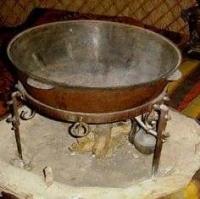
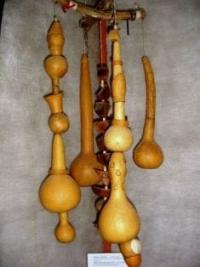
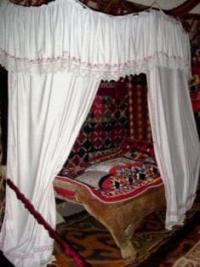
Excursions in museums of Southern Kazakhstan.
«Memory is the treasure house of the mind wherein the monuments thereof are kept and preserved»
Thomas Fuller.
Excursion to museum Otrar in village Shaulder.
Otrar Museum is located at an altitude of 202 meters above sea level, located 116 meters from right bank of Arys River, in southwestern part of village of Shaulder, in Otyrar district, Turkestan region. In settlement Shaulder which Arystan-Baba is near to site of ancient settlement Otrar and the mausoleum, there is a museum «Otrar» in which the ceramic utensils is presented, candlesticks, subjects of a life, house utensils, clothes, instruments of work.
The Otrar State Archaeological Museum-Reserve was organized on May 11, 1979 by the Decision of the Council of Ministers of the Kazakh SSR. His prototype was a small museum in the school at the Timur station, created by the artist and historian Asantai Alimov on May 17, In the period 1975 - 1976.
The museum was considered a regional branch of the regional museum of local lore. The foundation of the modern museum building was laid in 1979, and in 1982 the museum was opened for visitors. The Otrar Museum became the main research center and a repository of archaeological treasures found during the excavation of a unique historical monument - the settlement of Otrar, which for more than 200 years played the role of the economic and commercial center of the region.
The reserve museum occupies a total area of 3048.5 square meters The structure of the Otrar State Archaeological Reserve Museum includes 4 archaeological monuments of republican significance, 216 archaeological monuments of local importance.
This includes the ancient cities of the Otrar Oasis: Otrartobe, Kuyryktobe, Kokmardan, Altintoba, Aktobe, Zhalpaktobe, the mausoleum of Arystan-baba and other historical monuments. The exposition of the museum is divided into two sections: archaeological and ethnographic. In the archaeological hall, the earliest exhibits date back to the Bronze Age.
Basically it is pottery and other household utensils found during the excavations of the town of Otrar, the ancient settlement and the necropolis of Kokmardin. Interactive exhibits are amulets in the form of animal figures, most often in the form of a ram, a dog, a horse.
Among the exhibits of the hall there are a lot of remnants of tools, indicating the development of agriculture and nomadic cattle. The exhibition presents a wide range of exhibits from ceramics. Most of them are restored by the hands of restorers.
The colors and strength of the material that the ages do not control are amazing. In the group of utensils for the storage and transportation of water and food, hums predominate. Also from ceramics are lamps, dastarkhan, dated XI - XII centuries AD, kumgany, buckets. And also clay bricks, tiles, used for cladding the walls of mosques and floors in public baths.
The fragments of the water supply system speak of the high level of development of the towns infrastructure. By the late period of the development of Otrar - by the XVIIth century there were ceramics, fragile porcelain, iron tools, gold, silver and copper coins, remains of wheat and cotton, carved wooden panels, glass, bricks and tiles from terracotta.
In the ethnographic section are exhibits of the ХІХ - ХХ centuries collected from the local population - household items, jewelry, musical instruments, tools related to nomadic cattle breeding, agriculture, fishing, hunting.
There are also items of falconry, closely related to the spiritual culture of the people and the decoration of the yurt. The most valuable exhibits are inlays made of bone, a silver belt with gilding, jewelry - earrings, rings, pendant hangers-shops.
They give the exhibition a special brilliance. The museum also houses the library of Abu Nasir al-Farabi. Its funds hold over 3,000 publications, the works of al-Farabi and his students. The museum is actively engaged in scientific work. In 2001, the Otrar State Archaeological Museum-Reserve together with the Republican Scientific Research Institute in cooperation with Japan participates in the restoration and conservation of the monuments of the ancient Taraz.
During the implementation of the state program "Cultural Heritage", works on the program "Revival of the ancient Otrar" were launched. Studies were conducted on the banks of the Syr Darya, during which 30 previously unknown historical monuments were identified.
The eastern bath of the XIV century was restored. Last year, the eastern gates of the city were excavated in Otrar. Very interesting diopama «Otrar siege». The museum stores archeological finds in village Shaulder from site of ancient settlement Otrar and tells about a life of town in IX - XVIII c.c.
In October, 2001 in village Shaulder of area Otrar of the South-Kazakhstan area there was the international scientifically-practical conference devoted 1130 - years from the date of a birth of the great scientific Middle Ages Abu Nasr Mohammed Al-Farabi (870 - 950).
The Kazakhstan scientific and known scientists have taken part in conference Farabist from Iran, Turkey, Russia, Turkmenistan, Uzbekistan and other countries. Abu Nasr Ibn Mohammed Al-Farabi - the philosopher, the scientific-encyclopaedist, main representative east Aristotelian: a nickname «The Second teacher» - i.e. after Aristotel which Farabi made comments.
Live in Bagdad, Aleppo, Damascus. The basic compositions: «Gemma knowledges», «The Treatise about sights of inhabitants of virtuous city», the treatise about classification of sciences, «The Greater book about music». On a way to village Shaulder are.
Saks a barrow (V a century up to B. C. - I a century B.C.) in village Temirlanovka (it is based in the end of XIV century) where there is a regional museum of name Khadjimukana Munaitpasova; Bugun a water basin; a monument of the end of XIX century - Kyzyl-Kopir (The Red bridge) in settlement Ekpindi.
Geographic coordinates of Otrar Museum in Shaulder settlement: N42°46'34 E68°22'06



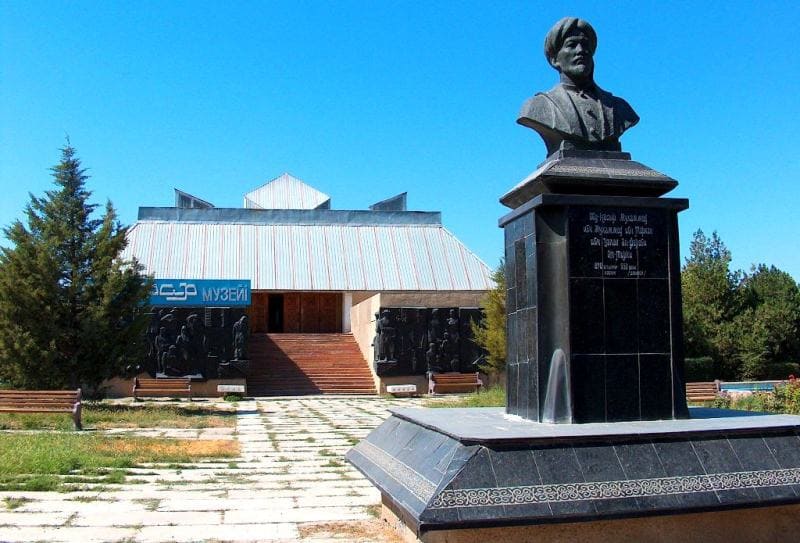
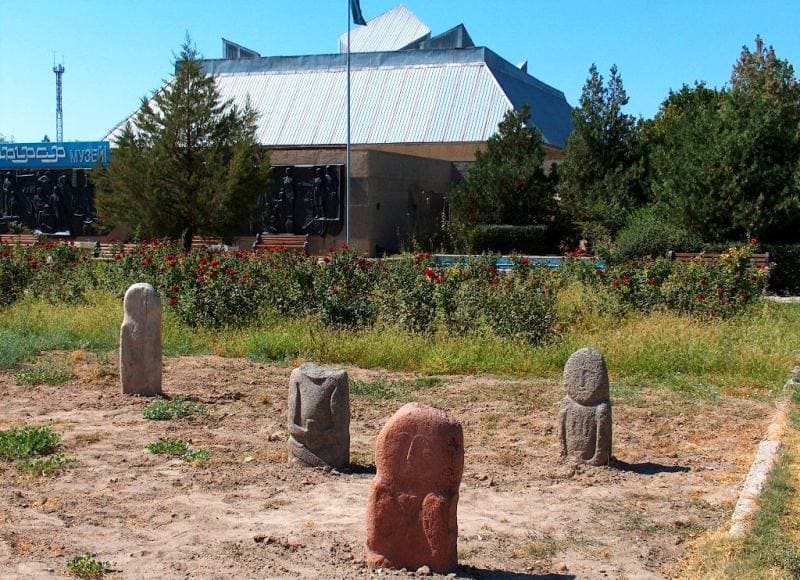



Authority:
https://culturemap.kz/ru/object/otrarskiiy-gosudarstvennyiy-arheologicheskiiy-muzeiy-zapo
Photos by:
Alexander Petrov.







